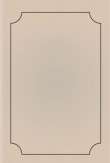You are here
قراءة كتاب A Visit to the Holy Land, Egypt, and Italy
تنويه: تعرض هنا نبذة من اول ١٠ صفحات فقط من الكتاب الالكتروني، لقراءة الكتاب كاملا اضغط على الزر “اشتر الآن"
the Holy Sepulchre—Mount of Olives—Adventure among the ruins—Mount of Offence—Valley of Jehosaphat—Siloam—Mount Sion—Jeremiah’s Grotto—Graves
CHAPTER VIII. Bethlehem—Rachel’s grave—Convent at Bethlehem—Beggars—Grotto of the Nativity—Solomon’s cisterns—St. John’s—Franciscan church at Jerusalem—Mourning women—Eastern weddings—Mish-mish—Excursion to the Jordan and the Dead Sea—Wilderness near Jerusalem—Convent of St. Saba
CHAPTER IX. Ride through the wilderness to the Dead Sea—The Dead Sea—The river Jordan—Horde of Bedouins—Arab horses—The Sultan’s well—Bivouac in the open air—Return to Jerusalem—Bethany—Departure from Jerusalem—Jacob’s grave—Nablus or Sichem—Sebasta—Costume of Samaritan woman—Plain of Esdralon—Sagun
CHAPTER X. Arrival at Nazareth—Franciscan convent—Tabarith—Mount Tabor—Lake of Gennesareth—Baths—Mount Carmel—Grotto of the prophet Elijah—Acre—The pacha’s harem—Oriental women—Their listlessness and ignorance—Sur or Tyre
CHAPTER XI. River Mishmir—Saida—Arnauts—Desert-path—Residence of Lady Hester Stanhope—Beyrout—The consul’s—Uncomfortable quarters—Sickness—The Bazaar—Vexatious delays—Departure from Beyrout—Beautiful views—Syrian costumes—Damascus—Aspect of the city—House of the consul
CHAPTER XII. The bazaar at Damascus—The khan—Grotto of St. Paul—Fanaticism of the inhabitants—Departure from Damascus—The desert—Military escort—Heliopolis or Balbeck—Stupendous ruins—Continuation of our voyage through the desert—The plague—The Lebanon range—Cedar-trees—Druses and Maronites—Importunate beggars—Thievish propensities of the Arabs
CHAPTER XIII. The Lebanon—Druses and Maronites—Illness of Herr Sattler—Djebel or Byblus—Rocky passes—Dog’s-river—Return to Beyrout—Sickness—Departure for Alexandria—Roguery of the captain—Disagreeables on board—Limasol—Alarm of pirates—Cowardice of the crew—Arrival at Alexandria
CHAPTER XIV. Alexandria—Keeping quarantine—Want of arrangement in the quarantine-house—Bad water—Fumigating of the rooms—Release—Aspect of the city—Departure by boat for Atfé—Mehemet Ali—Arrival at Atfé—Excellence of the Nile water—Good-nature of the Arab women—The Delta of the Nile—The Libyan desert—The pyramids—Arrival at Cairo
CHAPTER XV. Cairo—Quarrel with the captain—Rapacity of the beggars—The custom-house—The consulate—Aspect of Cairo—Narrow and crowded streets—Costumes—The mad-house—Disgusting exhibition—Joseph’s well—Palace of Mehemet Ali—Dates—Mosques at Cairo—Excursion to the pyramids of Gizeh—Gizeh—Eggs hatched by artificial heat—Ascent of the pyramids—The sphynx—Return to Cairo
CHAPTER XVI. Christian churches at Cairo—The Esbekie-square—Theatre—Howling dervishes—Mashdalansher, the birthday of Mahomet—Procession and religious ceremony—Shubra—Excursion through the desert to Suez—Hardships of the journey—Scenes in the desert—The camel—Caravans—Mirage—The Red Sea—Suez—Bedouin Camp—Quarrel with the camel-driver—Departure for Alexandria
CHAPTER XVII. Return to Alexandria—Egyptian burials—Catacombs of Alexandria—Viceroy’s palace—Departure from Alexandria—The steamer Eurotas—Candia—Syra—Paros and Antiparos—The Morea—Fire on board—Malta—Quarantine—St. Augustine’s church—Clergymen—Beggars—Costumes—Soldiers—Civita Vecchia
CHAPTER XVIII. The steamer Hercules—Syracuse—Neapolis—Ruins—Catanea—Convent of St. Nicholas—Messina—The Duke of Calabria—Palermo—The royal palace—Church of St. Theresa—St. Ignazio—Catacombs of the Augustine convent—Skeletons—Olivuzza—Royal villa “Favorite”—St. Rosalia—Brutality of the Italian mob—Luxuriant vegetation—Arrival at Naples
CHAPTER XIX. Sojourn at Naples—Sickness—Laziness of the people—Royal palace—Rotunda—Strada Chiaga and Toledo—St. Carlo Theatre—Largo del Castello—Medina Square—Marionettes—St. Jesu Nuovo—St. Jesu Maggiore—St. Maria di Piedigrotta—Public gardens—Academy “degli Studii”—Cathedral of St. Januarius—St. Jeronimi—St. Paula Maggiore—St. Chiara—Baths of Nero—Solfatara—Grotto “del Cane”—Resina—Ascent of Vesuvius—Caserta
CHAPTER XX. Caserta—Costume of the peasants—Rome—Piazza del Popolo—Dogana—St. Peter’s—Palaces—Borghese, Barberini, Colonna, etc.—Churches—Ancient Rome—The Colliseum—Departure for Florence—Bad weather—Picturesque scenery—Siena—Florence—Cathedral and palaces—Departure from Florence—Bologna—Ferrara—Conclusion
LIST OF ILLUSTRATIONS
1. JERUSALEM
2. NAZARETH
3. CHURCHYARD AT SCUTARI
4. THE DEAD SEA
5. MOUNT CARMEL
6. LEBANON
7. BALBECK
8. ISTHMUS OF SUEZ
CHAPTER I.
Departure from Vienna—Scene on board the steamer—Hainburg—Presburg—The “Coronation-mount”—Pesth—Ofen—The steamer Galata—Mohäcs—The fortress Peterwardein—Discomfort and bad management on board the steamer—Semlin—Belgrade—Pancsova—Austrian soldiers—The rock Babakay—Drenkova—Falls of the Danube—Alt-Orsova—The “Iron Gate”—Cattle-breeding—Callafat—Vexatious delay.
I had for years cherished the wish to undertake a journey to the Holy Land; years are, indeed, required to familiarise one with the idea of so hazardous an enterprise. When, therefore, my domestic arrangements at length admitted of my absence for at least a year, my chief employment was to prepare myself for this journey. I read many works bearing on the subject, and was moreover fortunate enough to make the acquaintance of a gentleman who had travelled in the Holy Land some years before. I was thus enabled to gain much oral information and advice respecting the means of prosecuting my dangerous pilgrimage.
My friends and relations attempted in vain to turn me from my purpose by painting, in the most glowing colours, all the dangers and difficulties which await the traveller in those regions. “Men,” they said, “were obliged gravely to consider if they had physical strength to endure the fatigues of such a journey, and strength of mind bravely to face the dangers of the plague, the climate, the attacks of insects, bad diet, etc. And to think of a woman’s venturing alone, without protection of any kind, into the wide world, across sea and mountain and plain,—it was quite preposterous.” This was the opinion of my friends.
I had nothing to advance in opposition to all this but my firm unchanging determination. My trust in Providence gave me calmness and strength to set my house in every respect in order. I made my will, and arranged all my worldly affairs in such a manner that, in the case of my death (an event which I considered more probable than my safe return), my family should find every thing perfectly arranged.
And thus, on the 22d of March 1842, I commenced my journey from Vienna.
At one o’clock in the afternoon I drove to the Kaisermühlen (Emperor’s Mills), from which place the steamboats start for Pesth. I was joyfully surprised by the presence of several of my relations and friends, who wished to say farewell once more. The parting was certainly most bitter, for the thought involuntarily obtruded itself, “Should we ever meet again in this world?”
Our mournful meditations were in some degree disturbed by a loud dispute on board the vessel. At the request of a gentleman present, one of the passengers was compelled, instead of flying, as he had intended, with bag and baggage to Hungary, to return to Vienna in company of the police. It appeared he owed the gentleman 1300 florins, and had wished to abscond, but was luckily



